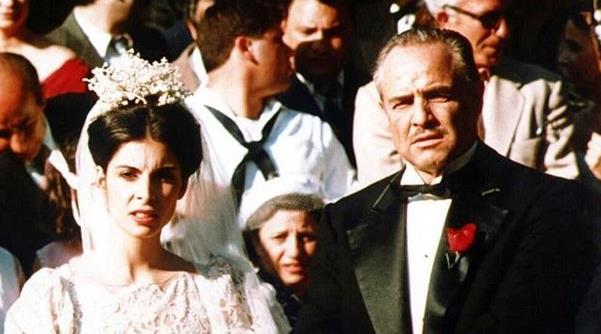The opening scene of The Godfather, a sprawling mafia epic, unfolds not with violence or tension, but with a lavish wedding celebration. This seemingly incongruous choice, with the wedding scene lasting a significant portion of the film’s runtime, has puzzled and intrigued audiences for decades. This article delves into the reasons behind director Francis Ford Coppola’s decision, exploring how the extended wedding scene serves multiple narrative purposes, setting the stage for the film’s central themes and character dynamics.
Beyond the Cake: Unveiling the Narrative Functions
The extended wedding scene in The Godfather transcends the typical function of establishing a joyous event. Here’s how it serves the film’s narrative:
- World-Building and Immersion: The wedding plunges the viewer into the world of the Corleone family. The lavish ceremony, bustling guests, and traditional Italian customs create a sense of authenticity and immerse the audience in the family’s culture and power.
- Character Introduction and Relationships: The wedding serves as a platform for introducing the key characters: the Corleone family members, their associates, and their rivals. Observing their interactions during the celebration reveals their personalities, alliances, and potential conflicts. For instance, the exchange between Bonasera and Don Corleone foreshadows future events and highlights the power dynamic within the family.
- Don Corleone’s Power and Accessibility: The constant stream of visitors seeking favors from Don Corleone during the wedding highlights his immense power and influence. However, the act of granting favors also portrays Don Corleone as a man of tradition and a keeper of an unspoken code of obligation. This complexity helps establish him as a multifaceted character.
- Juxtaposition and Foreshadowing: The joyous, celebratory atmosphere of the wedding scene sharply contrasts with the violence that will soon become a recurring theme in the film. This creates a sense of foreboding and foreshadows the inevitable descent into a darker world.
- A Glimpse into Family Dynamics: Although a celebration, the wedding scene reveals glimpses into the internal conflicts within the Corleone family. Sonny Corleone’s impulsiveness and Michael’s detachment hint at the challenges the family will face in the future.
Breaking Conventions: A Calculated Choice
The Godfather deviates from conventional mob film tropes by starting with a seemingly mundane scene. This deliberate choice by Coppola serves several purposes:
- Subverting Expectations: Traditional mob films often open with violence and action. The Godfather’s deliberate use of a non-violent, celebratory scene subverts audience expectations and sets the stage for a more nuanced exploration of the mafia world.
- Establishing the Importance of Family: By devoting significant screen time to the Corleone family celebration, the film underscores the importance of family for the characters, particularly Don Corleone. This understanding becomes crucial as the narrative unfolds and loyalty and family bonds are tested.
- A World of Contrast: The wedding scene establishes a world of contrast – a powerful mafia family existing alongside traditional values and celebrations. This duality of power and tradition becomes a central theme in the film.
A Masterclass in Filmmaking
The extended wedding scene in The Godfather is a testament to Francis Ford Coppola’s masterful filmmaking. By prioritizing character development, setting the stage for future events, and subverting audience expectations, the scene lays the groundwork for the complex narrative and character arcs that unfold throughout the film. It serves not just as a celebration but as a meticulously crafted introduction to the world of The Godfather.
